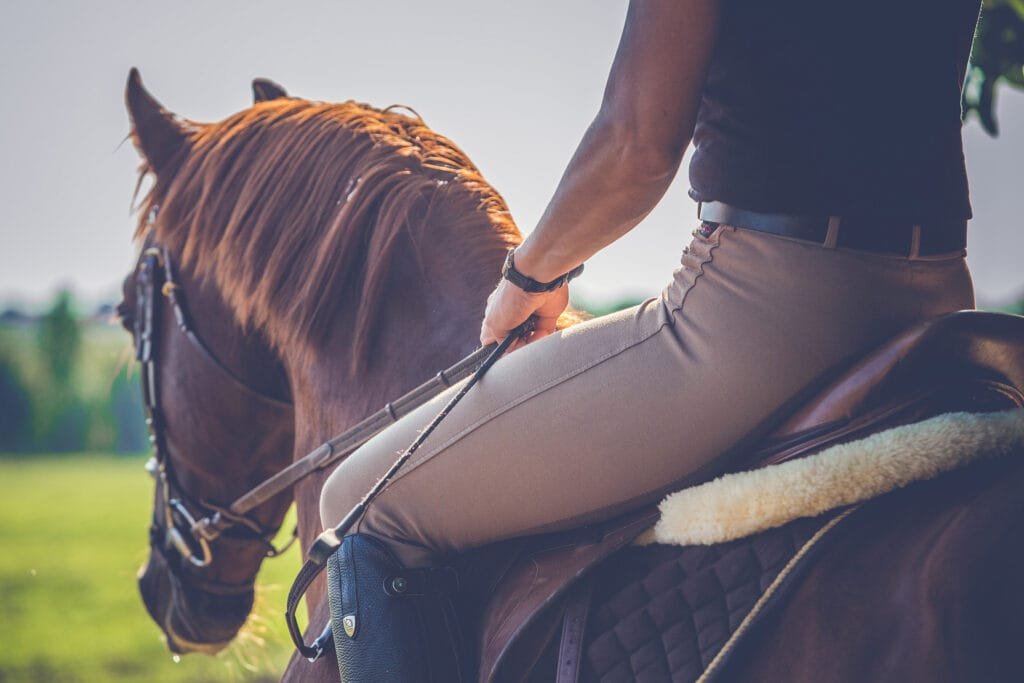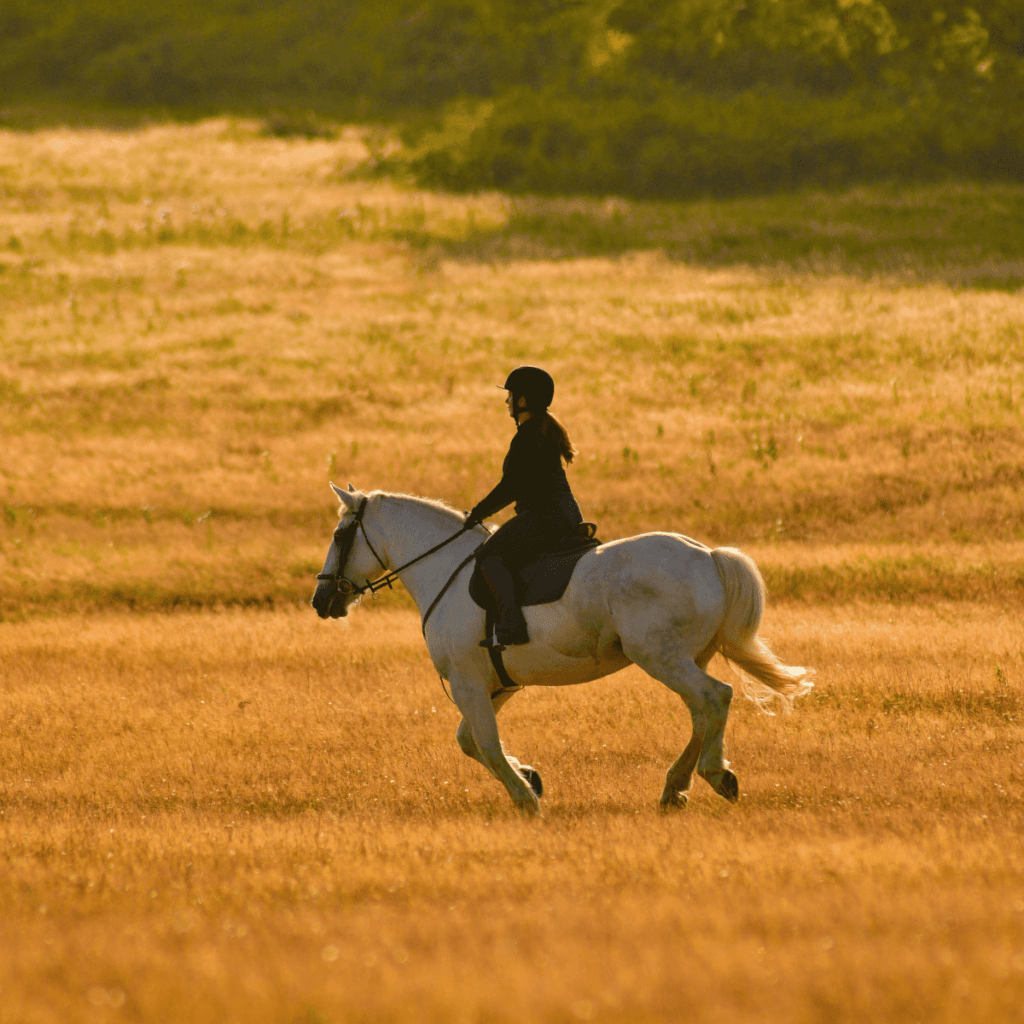Equitation refers to the way a rider sits and rides on a horse.
A strong, effective seat and proper position are essential for good communication between you and your horse, allowing for better control, comfort, and overall performance. Whether you’re a beginner or an experienced rider, refining your equitation can enhance your riding experience and improve your horse’s performance.
In this article, we’ll discuss tips for improving your equitation, focusing on your seat and position to create a more balanced and effective ride.
1. Maintain a Strong, Centered Seat
Your seat is the foundation of good equitation. A strong, centered seat helps you maintain balance and allows for better control of your horse. To achieve this, make sure your weight is evenly distributed between both hips, and your seat bones (ischial tuberosities) are firmly connected to the saddle.
Sit tall, but not stiff. Imagine a string pulling you upward from the top of your head. A proper seat should feel relaxed yet firm, with a slight engagement of your core muscles to prevent slouching. Avoid leaning forward or backward, as this can throw off your balance and make it harder to stay in sync with your horse’s movement.
2. Align Your Posture
Good posture is key to effective equitation. It’s essential to maintain a straight, aligned position from head to toe. A balanced posture ensures that your body moves with the horse rather than against it, leading to more fluid transitions and a more harmonious ride.
Start by imagining a straight line running from the top of your head to your heels. Keep your shoulders back and your chest open. Avoid rounding your shoulders forward, as this can affect your balance and restrict your ability to give subtle aids to the horse. Your elbows should be slightly bent and close to your body, with your hands positioned just above the saddle, allowing for better communication with your horse’s mouth.
Your legs should hang naturally from your hips, with your knees gently in contact with the saddle or horse’s sides. Keep your heels down to help maintain a stable lower leg position.
3. Relax Your Lower Leg and Feet
A common mistake among riders is stiffening their lower legs. To improve your position, your lower leg should hang naturally from your hip without gripping or pinching the saddle. This relaxed position allows you to have more flexibility and adjust your leg aids more subtly, improving your communication with your horse.
Your feet should remain in the stirrups, with the balls of your feet placed in a neutral position. Avoid letting your toes point out too much or your heels rise too high. Keeping your heels down and the ball of your foot lightly resting in the stirrup will help you maintain a stable leg position while providing proper leg aids.
4. Engage Your Core Muscles
Your core plays a vital role in maintaining a secure seat and balanced position. Engaging your core muscles helps you stay centered, prevents slouching, and allows you to absorb the horse’s movement.
To engage your core, gently tighten your abdominal muscles, as though you’re bracing for a light punch to your stomach. This subtle engagement helps you maintain your balance without becoming tense. A strong core also allows you to give clear and effective cues to your horse through your seat and legs.
5. Position Your Hands Correctly
Your hands play a significant role in equitation, not only for maintaining balance but also for effective communication with your horse. Your hands should be soft and steady, with a slight bend in the elbow. The reins should run through your hands without tension, allowing you to give clear signals to the horse’s mouth.
When riding, make sure to keep your hands at the appropriate height, usually just above the saddle, with your thumbs pointing up. Avoid holding the reins too tightly, as this can create tension that is transferred to the horse. A relaxed, soft connection with the reins will allow you to give clearer aids and respond to your horse’s movements more effectively.
6. Practice Your Balance in Different Gaits
Being comfortable and balanced at all gaits is essential for improving your equitation. It’s easy to stay balanced in a walk, but can be more challenging in a trot or canter. Focus on staying centered and maintaining your position as your horse moves through different gaits.
In the trot, aim to stay with the movement of the horse while maintaining a steady, relaxed seat. Avoid bouncing or tensing up, as this can disrupt your balance. Try to rise in the saddle in a two-point position during posting trot, with your weight on your thighs and not in your stirrups.
At the canter, your seat should remain soft, following the motion of the horse’s back. Keep your pelvis relaxed and allow it to follow the horse’s movement without forcing it. Keeping a steady, balanced position at the canter will help you communicate more clearly with your horse, especially in transitions.
7. Use Your Eyes and Look Ahead
A rider’s eyes can have a huge impact on their position and balance. Looking down can cause you to lose balance or misjudge distances, while looking ahead helps you stay aligned and prepared for what’s coming.
Always look ahead and focus on your riding path. This not only improves your posture but also helps your horse feel more confident in responding to your aids. A rider who looks ahead is better prepared for upcoming turns, obstacles, and changes in direction.
8. Get Feedback and Practice Consistently
Improving your seat and position takes time and practice. It’s essential to seek feedback from an instructor or experienced rider, as they can point out areas where you may need to improve. Regular practice is key to reinforcing good habits and building muscle memory.
As you practice, focus on one aspect of your equitation at a time, whether it’s your seat, hands, or legs. Over time, these small improvements will add up, and you’ll begin to see a noticeable difference in your overall position and effectiveness as a rider.
Improving your equitation takes dedication and practice, but it’s an essential part of becoming a better rider. By maintaining a centered, relaxed seat, aligning your posture, and engaging your core, you will develop a more effective and balanced position. Consistent practice and feedback will help you refine your equitation over time, leading to more harmonious rides with your horse.
With patience and attention to detail, you can enhance your equitation and become a more confident, skilled rider.
Click Here To Buy Equestrian Tights Horseback
Click Here To Buy Western Saddle




